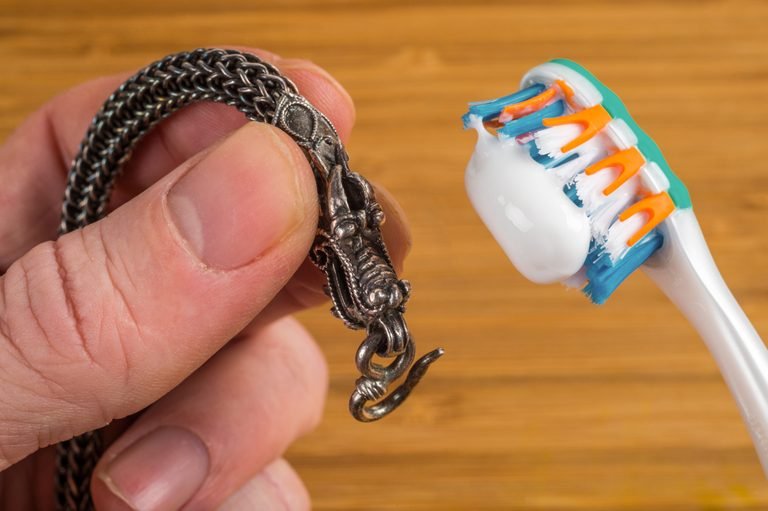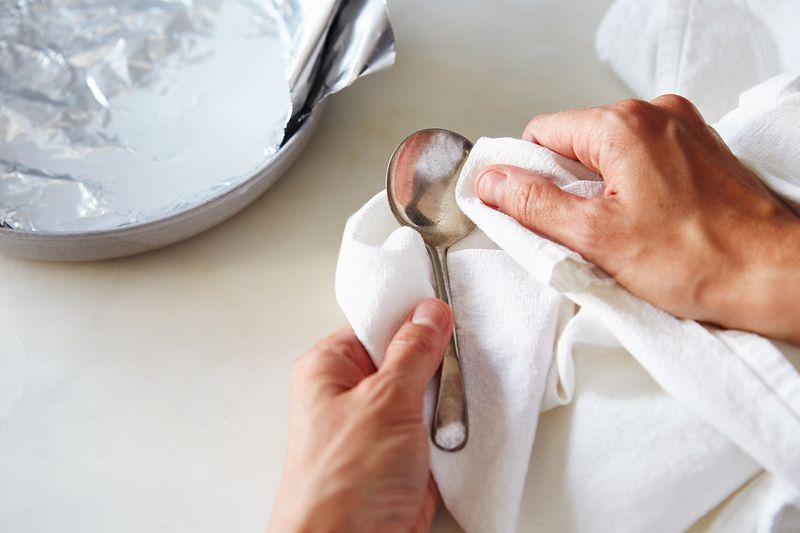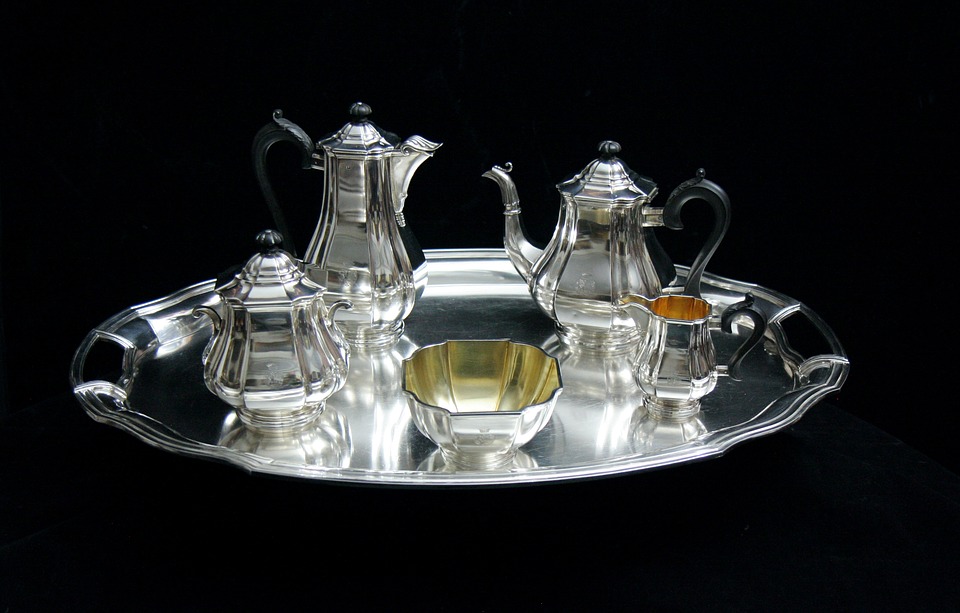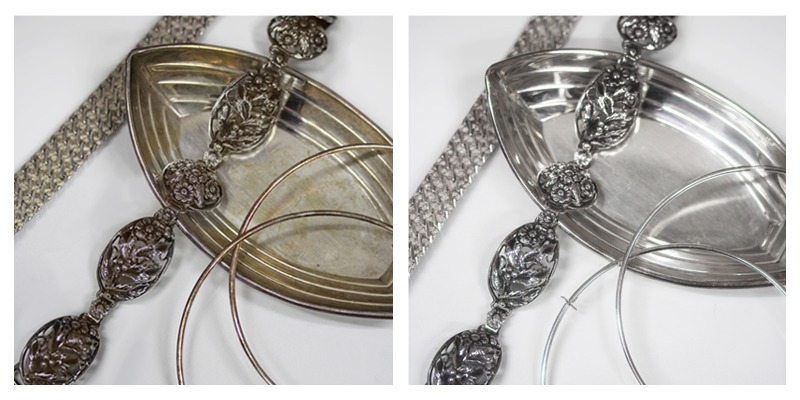Silver jewellery, trinkets and utensils form an integral part of every household. But a major shortcoming with silver is that it gets tarnished and even corroded easily. Gharpedia shares with you some useful cues for your silverware care.
There’s no one on earth who doesn’t appreciate the beauty and durability of silver. This metal has been mined for more than 6,000 years. Its strength lies in the fact that it is easy to mould and shape. As per the ‘Anne Helmenstine’ (Author of article Silver Facts – Atomic Number 47 Element Symbol Ag, published in Science Notes), a single ounce of silver can be drawn into 8,000 feet of thin…very thin…wire!
Cast a glance at any household and you may not come across gold or platinum but silver will definitely be there; it could be in any form – jewellery, utensils, a candle stand, an incense stick stand an idol, a trinket or even a coin. But a challenge when it comes to silver is that when exposed it turns slightly black i.e. it tarnishes. This detracts from its aesthetic beauty.
Does this mean you should abstain from silver? Of course not! Gharpedia brings for you some ways to treat your silver worth its weight in gold
Best Home Remedies for Cleaning Silverware
Did you ever Know, how to clean silver at home in an easy and pocket-friendly way? If your answers is ‘NO’, then don’t worry, here in this article we have tried to end your concerns. Followings are the best home remedies for cleaning your silverware.
- Put baking soda on a damp cloth and massage the silver with it. Then rinse and buff dry. Baking soda will remove the tarnish and enhance the silver’s patina. Baking soda has numerous usages, along with silverware cleaning, it is also used for daily household cleaning. On below link, we have already shared some uses of baking soda, which could be helpful to you in cleaning in your daily life.
- Cut the hard ends off a banana peel and puree the peel in a blender or a food processor. Then using a soft cloth, rub the silver with the pureed peel. Wipe, rinse and buff dry with a clean soft cloth.
- Coat the silver with a thin layer of non-gel white toothpaste, and gently rub the object with a damp cloth. Once the tarnish has disappeared, wipe off all of the toothpaste, rinse and buff dry with a soft cloth.
- Take some sour milk in a glass pan and douse the tarnished silver pieces in the same for around half-an-hour. Thereafter, wash the silver pieces with a detergent (dish), rinse and dry with a soft cloth for outstanding results.

Home Remedies for Cleaning Silverware
Tips for Removing Tarnish from Multiple Silver Pieces Together!
In case you want to clean lots of silver pieces quickly and easily then try this method –
Line the bottom of a heatproof glass pan (say Pyrex) with aluminium foil, shiny side-up. Put the pieces of silver on top of the foil. Add one heaped tablespoon of baking soda and pour in just-boiled water – enough to submerge the silver items. Voila! In just a few minutes, right before your eyes, the tarnish will disappear from the silver and end up on the foil. As soon as the silver is totally tarnish-free, rinse everything thoroughly and then buff the pieces dry with a soft cloth.
This easy and swift method magically removes the tarnish from silver – lots of pieces – at once.
Although this system works well, it may also remove dark accents in design crevices which is not always a good thing! And it may also soften the cement of hollow-handled flatware which is definitely NOT a good thing! And most importantly it may leave silver with a lacklustre finish.
So, if you like lustre…and the dark accents in design crevices…and you want to hold on dearly to your flatware’s hollow handles … and if your silver pieces are heirlooms then try this –
Rub each piece of silver with baking soda sprinkled on a moist, soft cloth. Then buff dry. It may take a little more physical labour to clean your silver this way, but trust us your heirlooms will thank you for it!
Silver Utensils – Dos and Don’ts

Silver Utensils Cleaning
You should be Knowing the following points for your silverware care.
- Albeit silver is dishwater proof yet it’s better to wash silverware by hand in hot sudsy water as soon as possible after use. Doing so will prevent food from causing tarnish stains. Rinse well in clear warm water, dry thoroughly (never let silver air-dry) and put it away.
- Foods – like eggs that contain sulphur; and vinegar, mustard and salt that contain mild food acids – will make silverware tarnish and/or corrode faster than alkaline foods. Well that doesn’t mean you should not be eating these foods, it’s just to emphasise that one needs to wash silverware as soon as possible after use.
- If you insist on putting silverware in the dishwasher then just remember not to put it in with stainless steel. The reason being that an electrolytic action takes place when silver and stainless steel interact; this action causes pitting on the stainless steel and leaves black spots on the silver.
- Salt should not touch silver as it can make it tarnish and/or corrode within no time at all! So, ensure that your shaker has a glass lining. It would be a good idea to remove the salt after each use even if there’s a glass lining.
How to take Care of Silver Tea/Coffee Pots?

Silver Tea/Coffee Pots
- In between uses keep the lid off and put lumps of sugar or a charcoal briquette inside to prevent the pot from developing a stale smell.
- To clean coffee stains from the inside of the pot use fine steel wool that has been dipped in distilled white vinegar and table salt.
- To clean tea stains from the inside of the pot, fill the pot with just-boiled water and half cup of washing soda; let the solution soak overnight then rinse the pot and wipe it dry.
How to take Care of Silver Candlesticks?

Silver Candlesticks
Remove wax by pouring just-boiled water over the candlesticks to melt off the wax. A hair dryer set on ‘hot’ will also melt the wax. But be careful as you don’t want to melt your fingers in the process, do you!
How to take Care of Silver Jewellery?

Silver Jewellery Cleaning
- Has your much-loved silver jewellery turned black? Relax it can be cleaned in a jiffy! Simply place it in a cup of water and drop in two tablets of Alka-Seltzer; post five minutes i.e. after the fizz subsides, rinse the jewellery and dry it thoroughly with a soft cloth… voila, your trinkets have got back their original sheen!
- Tarnish on the posts of silver earrings may cause an ear infection. Prevent that from happening by painting the posts with a tiny bit of clean nail polish (don’t do this if you are allergic to nail polish).
Tips for Storage of Silver

Storage of Silverware
Taking care of silverware is not limited to only cleaning, but storing is also a crucial part of its caring. Here we are sharing some ideas for the storage of silverware.
- Moisture causes silver to tarnish. So whether you store or display your silver objects in a case, a credenza or a cabinet; add things that will help to absorb moisture such as little pieces of blackboard chalk, a handful of uncooked rice, a few charcoal briquettes or the small silica gel packets or drums that come in vitamin bottles.
- Exposure to moisture and air causes silver to tarnish. If you’re not displaying your silver, store it in acid-free tissue paper or in specially-treated tarnish-proof bags (easily available at hardware stores). You can also look for bags that are made of ‘Pacific Silver Cloth’ (also called pacific cloth/silver cloth) which would also be available on e-retail portals.
- Wrapping silver in newspaper is a strict no-no because paper being acidic causes silver to tarnish.
- Oak is an acidic wood so it’s not a good idea to store silver in oak drawers or cabinets unless you wrap the silver or line the drawers with Pacific Cloth or acid-free tissue paper.
- Plastic bags are better than nothing at all, but moisture can get locked-in and it will cause tarnishing.
Pacific silver cloth

Pacific Silver Cloth to keep your silver pieces
If you have treasured silver, consider buying some Pacific Silver Cloth by the yard to line the drawer or wherever you keep your silver pieces. A suggested method to follow here would be –
- Do one surface at a time to ascertain that you complete the job in manageable sections
- While cutting the pieces of the Pacific Cloth over-measure the cloth by an inch or so on all sides
- Prior to applying the dry fabric, thin down white glue with plain water (the glue should be thin enough to brush on but not so thin that it will soak through the fabric)
- Brush the glue on the surface area; wait for a few minutes until the glue is slightly tacky but not completely set
- Keep the fabric taut (you don’t want wrinkles as you lay it down) but don’t over stretch the fabric
- Once it’s down use something with a flat surface like a spatula to smooth it out completely
- A word of caution – it can be problematic to turn corners with the fabric, so trim the fabric in corners with a sharp razor blade or you can have a little ruffle
Caution for Silverware Care
- Do not rub the silversmith’s markings too hard…else they’ll fade away along with the value of the piece
- Treat silver-plated items as if they were solid silver but with even more care as the coating on silver plate can peel off if it is rubbed too vigorously
- Never let rubber bands or any form of rubber come into contact with – or even in the proximity of – silver. The sulphur in rubber can cause tarnishing and corrosion.
On a parting note, the best tip for your silverware care is to use them! The more you use it, the less will it tarnish and the better will be the patina. If you’re saving it for special occasions, make every occasion special by bringing out the good stuff.
With this knowledge, you may also like to read useful house cleaning tips that can come handy while cleaning your house! Click on a link below!
Image Courtesy: Image 2, Image 3, Image 6, Image 8
Author Bio
Huta Raval – An English Literature and Journalism Topper, Huta Raval has graduated from the L D Arts College, Ahmedabad. Post serving for 23 years in the NBFC and Public Library Sectors her desire for ‘writing the unwritten’ brought her to the creative field of content writing. Her clientele comprises of NGOs, Blogging Platforms, Newspapers, Academic Institutions, et al.






